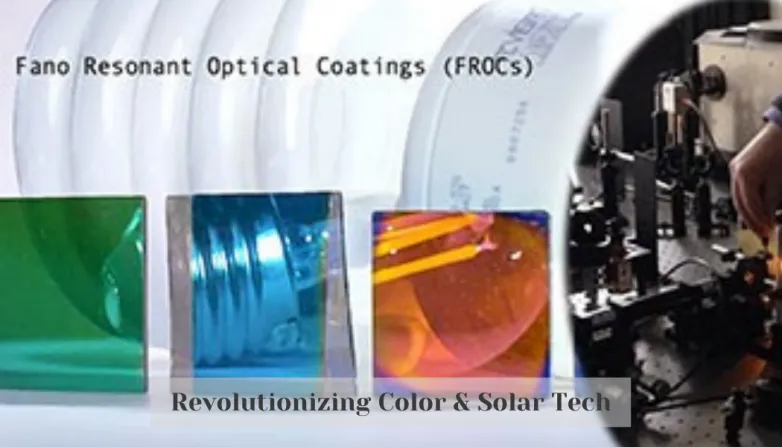Revolutionizing Color & Solar Tech
- A revolutionary optical coating developed by Case Western Reserve University physicists to extend solar panel life, increase data storage & improve anti-counterfeiting measures. Collaborators from MIT, the University of Arizona & University of Rochester applied findings from Italian physicist Ugo Fano to produce vivid, pure colors. Published in Nature Communications.

Case Western Reserve University physicists are developing ultra-thin optical coatings that can be used to manipulate energy while reflecting and transmitting light to produce vivid, pure colors. These coatings could be used to extend the life of solar panels by separating useful thermal and photovoltaic energy. They can also be used for other applications, such as increasing data storage and improving anti-counterfeiting measures and decor. The coatings are based on the findings of Italian physicist Ugo Fano on manipulating spectral line shapes, or energy changes in molecules and atoms, and the research group has obtained a patent on the coatings. Collaborators from MIT, the University of Arizona and the University of Rochester have worked with industrial partners in the US and Finland to explore the scaling up of the technology. The findings have been published in the journal Nature Communications.
How Can CWRU Physicists Extend Solar Panel Life?
- Cleveland-based Case Western Reserve University (CWRU) physicists are researching ways to extend the life of solar panels, improving their performance and reliability.
- The research team is focusing on the use of a “self-healing” coating that can be applied directly to the solar panel’s surface.
- The coating is designed to protect the panel from extreme environment conditions, such as temperature, humidity and ultraviolet radiation.
- The coating is composed of two layers. The first layer is a silica-based material that is hydrophobic, meaning it is resistant to water. The second layer is a molecular-level network that can repair itself after being damaged.
- This coating is designed to protect the solar panel from corrosion, dust and dirt, and other environmental factors that can reduce the panel’s efficiency and life expectancy.
- The research team is also exploring the use of nanotechnology, such as nanowires, to increase the efficiency of the solar panel by increasing its surface area.
- The research team is also looking at ways to reduce the weight of solar panels, which will allow them to be installed in more places and become more cost effective.
Also read

